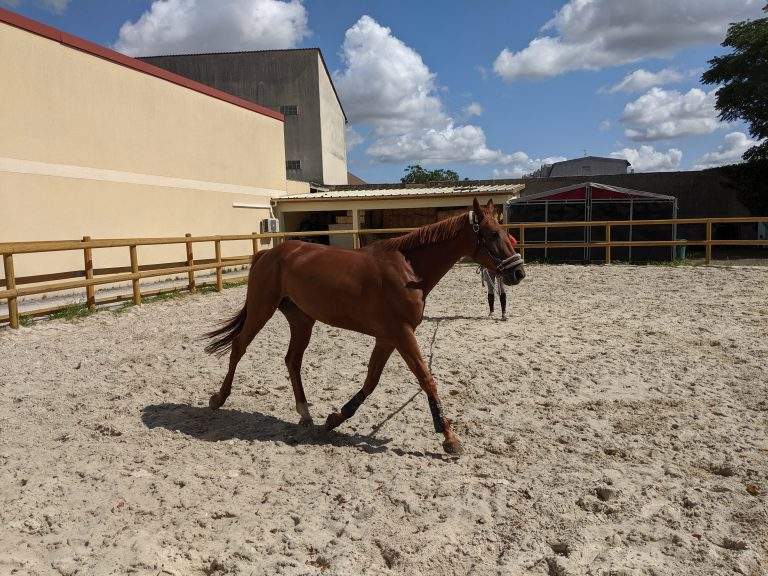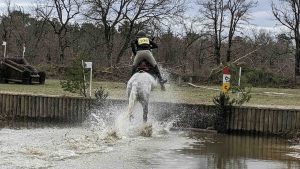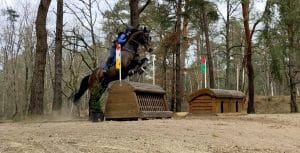The observation is growing within farriery training centers and schools: more and more women want to become a farrier, a job that is passionate, physical, and sometimes precarious. Overview of these women farriers thanks to the testimony of Sabine Valladas, patroness of Unicorne Maréchalerie in the Dordogne since five years.
Ekico : Sabine, thank you for the time given to this interview on the subject of female farriers. You have been practicing for several years now, why did you choose this path, initially taken more by men?
Sabine Valladas : I have always had a special interest in horses and their locomotion. Already as a child, I liked to observe how and with what elegance they moved, played or kicked. I was lucky enough to have a shetland that I was happy to teach him a few circus tricks. I then imagined hands instead of his hooves. I understood many years later, during my first initiations to farriery, that the term hand was actually quite accurate! As a teenager, in an equestrian center, I was careful that all the hooves were cleaned before and after each session. I was indeed rather dissuaded from going down this path, but I persevered. I finally started my activity at 34 years old!

Ekico : From experience, do you think that turnover is higher for women, for men, or that it is the same for both genders? What is your secret to lasting in the profession?

Sabine Valladas : I think this reconversion is more visible among women. During my adult training in 2015, even though there was parity of women and men, the women were 5 to 10 years older than the men. For the most part, they were mothers of children in school and at a turning point in their professional careers. They could also count on the moral and financial support of their husbands. All owned one or more horses. The men, for the most part, were single and/or childless, not all of them owned horses, but they were nevertheless all riders, regardless of discipline.
The women seemed more in search of understanding the anatomy of their horses and the analysis of the unfortunate experiences they had in the past with former farriers. Nevertheless, we find in everyone the desire to participate in the well-being of the horses and to establish communication with the owners.
The secret to lasting in the profession? A steel mind, work with your heart, be vigilant and attentive to anything that could put us in danger, and do a minimum of sport to keep a good physical condition!
Ekico : In your daily life, do you work with apprentices? Do you think that certain missions are better carried out by women, and others by men?
Sabine Valladas : I only had one experience as an apprentice master. My apprentice was a woman, and I was delighted! She was conscientious, responsive and determined. Farriery remains a dangerous profession, where it is necessary to have a muscular silhouette… and often big hands! But I find that it balances out and that, indeed, certain missions will be better carried out by one or the other according to the sensitivity and the capacities of each one. For my part, I often juggle with my feminine part and my masculine part!
Ekico : What do your customers think? In your business, what type of clientele do you work for?
Sabine Valladas : Most of my clients choose me because I am a woman. They probably relate that a woman will have more patience, gentleness, communication, and a different approach. I notice that clients are more impressed and attentive to potential dangers during my service! I mainly work with individuals practicing recreational riding, equestrian centers, owners of donkeys, or even heavy horses. Some call on my services only for care, advice and/or locomotor assessments.
Ekico : Finally, what advice would you give to young women who wish to dedicate themselves to this career or to your female colleagues who are already well established in the profession?
Sabine Valladas : I think that the diploma (CAP Maréchalerie in French) is too light to start independently at 18/22 years old. Continuing in BTM would be a plus. Even for people who would move towards barefoot areas because, from my experience, some pathologies will appear temporary orthoses for better rehabilitation. That said, for people wishing only to be dedicated to trimming, after obtaining the mandatory CAPA (in France), there is the possibility, for example, of joining the French Institute of Equine Podiatry, which offers an additional module and certifying training. Young women must be aware that it is absolutely not recommended to work pregnant, given the postures and the dangerousness of the job and, with a young baby, it is very complicated…. In the meantime, we have often lost our physical form and our clientele. The ideal is to start in collaboration with one or more farriers before taking off and thus be able to stand up to customers and veterinarians.

The advice I quote is valid, in my opinion, for all female farriers :
– have a global approach to the horse (holistic approach) because each equine is unique. It is necessary to have knowledge on all the fields which revolve around equines.
– have a sense of resourcefulness, DIY, and repair.
– have self-confidence but also know how to question yourself.
– always link softness and firmness.
– adopt good working postures to minimize physical fatigue in the short and long term and stay alert to any dangerous situation!
– train to work with donkeys because they are equidae different from horses, which also deserve to be monitored regularly and appropriately. Misunderstood, they are more dangerous than ponies and horses!
– do a minimum of sport, walking, stretching, and drink well.
– be aware of our limits, without worrying about not being able to do better.




